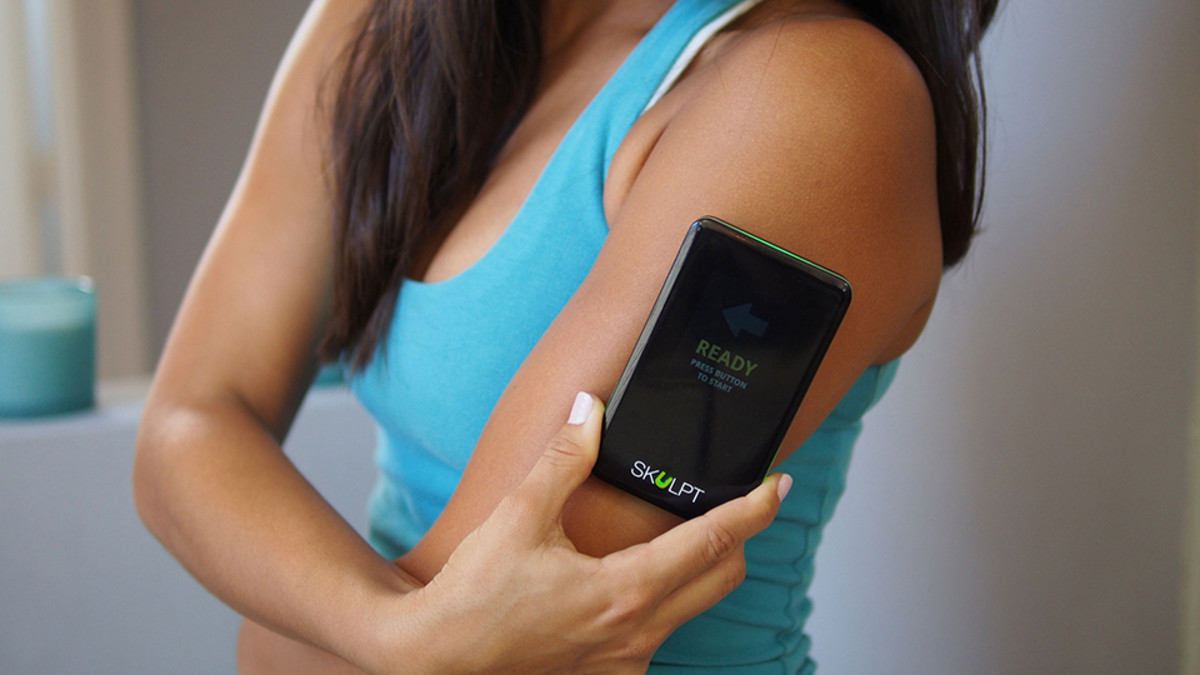Cell phone-shaped device Skulpt measures muscle quality and body fat
San Francisco-based company Skulpt jumped into the fitness wearables market in February with a sensor designed to measure the ratio of fat and muscle fiber in a user’s muscles. But while the device might seem perfectly suited to the body-building world, there is more to Skulpt than just bulking up.
Co-founder Seward Rutkove is a Harvard-educated neurologist and heads the Division of Neuromuscular Disease at Beth Israel Deaconess Medical Center in Boston. In February 2011, Rutkove won a $1 million prize from Prize4Life for finding a way to quantify muscular deterioration in amyotrophic lateral sclerosis—also known as ALS or Lou Gehrig’s disease. The medical wing of Rutkove’s company is still based in Boston, and provides medical devices used by research teams investigating muscle-wasting diseases such as ALS, muscular dystrophy, and spinal muscular atrophy.
USA Volleyball monitoring vertical jump statistics with new technology
The Skulpt Aim looks like a slightly curved cellphone with a touchscreen on the front and six pairs of electrodes on the back. The reason for the curvature is so that it better fits against different parts of the body, and thus the electrodes can make better contact—though spraying water on the skin is also advised to improve this electrical connection. When analyzing a particular muscle, two pairs of electrodes are used. The larger, outermost pair is used to transmit an alternating current through the muscle, and the smaller, innermost pair is used to pick up the resultant voltage on the skin. By measuring both the voltage and any time delay, the impedance of the tissue, which includes both how resistant it is to the flow of current and its ability to store charge, can be calculated. Then, Rutkove explains, “the way we pull out the fat and muscle pieces is just knowing the impedance characteristics of each. They are very different tissues, so you can tease them apart.”
As well as simply working out the percentage of fat in a muscle, the Aim can also analyze the size of the muscle fibers and thus estimate the condition of a given muscle through the company’s muscle quality, or MQ, rating. “There’s a biological meaning for [MQ],” Rutkove says, “which is actually the force generation of a muscle divided by its cross-sectional area.”
“[MQ] defines how much of the muscle is muscle as compared to fat, connective tissue, [and] blood vessels,” Rutkove says. The rating is scaled in a similar way to IQ: a score of 100 is considered average, and stronger, leaner muscles will have an MQ above 100.
Because the device is not measuring the raw strength of a muscle, but instead the strength to size ratio, it could have potential in sports where weight is every bit as important as strength. Jockeys, for example, need to aggressively control their body weight so as not to slow down their ride with even an extra ounce of mass. But jockeys also need to have exceptional strength for their size so that they can control horses many times bigger than themselves. Effectively they need to maximize muscle mass while minimizing body mass, and though small and skinny, they should score just as highly in muscle quality as a sprinter.
The keys to living a healthier lifestyle
The Aim can measure 12 different muscle groups on both sides of the body, and also estimate total body fat percentage from these readings. It can store the profiles of up to six different people, and syncs with iOS and Android devices using Bluetooth. The device retails online for $199.
According to Rutkove, the ability to accurately identify the different components of a muscle might have implications for injury prevention and detection in the future. “If you’ve injured the muscle through overtraining or actual injury of some sort, like a sprain or a fracture, you’ll see [MQ] drop dramatically,” he says. Skulpt currently advises against using Aim straight after working out directly because of this. Training causes lots of small tears in a muscle, which can offset the readings. Though Skulpt is currently focused on the fitness rather than injury prevention market, future versions of its device could be used to detect this slight damage. Coaches could then use that as a way to modify workouts or prescribe rest to avoid making minor injury worse.






